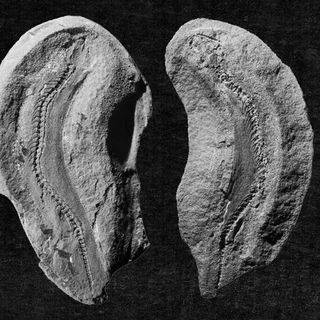Since the early 2010s, a fast-moving disease has been rampaging Caribbean coral reefs, leading to biodiversity loss. New research shows that water discarded from ships, especially amid increasing ship traffic in the Caribbean, may play a role in the spread of the deadly infection.
It is called the stony coral tissue loss disease (SCTLD) since it affects stony corals — or, marine animals that are known to build themselves a hard skeleton. According to scientists,this infection is potentially the most deadly disease to ever affect corals. This is because it completely destroys the soft tissue of the stony coral species it infects — killing them within months, and sometimes even weeks, of becoming infected. Worse still, the infection can travel up to 50 meters in a single day.
Published in the journal Frontiers in Marine Science this month, the researchers linked the infection to wastewater from ships, whichis already known to contain pathogens. The study found that SCTLD was more prevalent in reefs closer to commercial ports, and noted “an increasing proportion of healthy colonies as distance from the port increased… and a greater proportion of recently dead colonies closer to the port than farther away.”
The infection was first identified in Florida in 2014, and since then, it has spread to Jamaica, the Mexican Caribbean, the Dominican Republic, Puerto Rico, and the Bahamas. Reportedly, SCTLD has now been detected in around 18 countries, and its mortality rate reached almost 43%.
The direction of the infectious spread, too, affirms this theory. “The prevailing currents in the Caribbean push seawater to Florida and not in the reverse direction, and the predominant wind direction is westward. So human dispersal [through ships]… seems necessary,” Judith Lang, scientific director at the Atlantic and Gulf Rapid Reef Assessment project, which has been tracking the disease, told The Guardian.
Related on The Swaddle:
Marine Scientists In Hong Kong Are Rebuilding Coral Reefs With 3D‑Printed Tiles
Experts are still trying to understand whether a virus is responsible for the disease, or a bacterium, but they appear to have established that the pathogen is originating in the wastewater from ships.
In addition to jeopardizing the reef ecosystem and threatening biodiversity, the death of corals could also affect the lives and livelihoods of communities in developing countries that rely on coral reefs for fishing and tourism.
According to the United Nations Environment Program, “reefs of the Caribbean consist of over 60 species of corals and 1500 species of fish [and] are important for… protecting the coastline and vulnerable communities against impacts of climate change, erosion, flooding and hurricane, and storm damage.”
At present, scientists have been trying to treat infected corals with the antibiotic amoxicillin, which has helped bring down coral mortality rates due to the infection. However, it isn’t a permanent solution to the problem.
Lang believes we should focus on eliminating the human-made causes and triggers for the disease — rather than working to alleviate the symptoms brought on by our own actions. This includes implementing regulations such as the Ballast Water Management Convention by the International Maritime Organization, which governs the discharge of wastewater from ships.
“Given a chance, nature can heal naturally,” she said.




